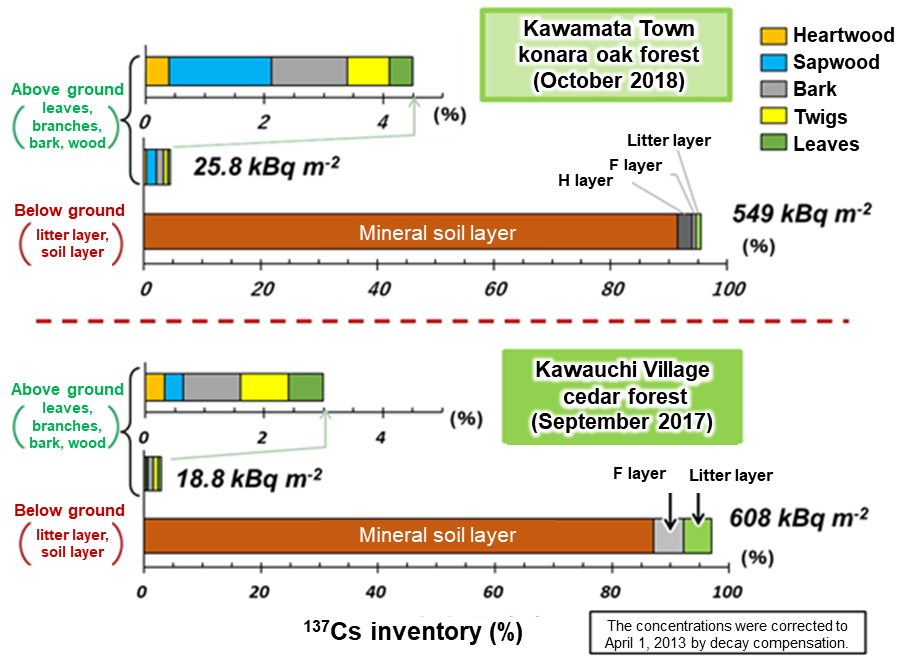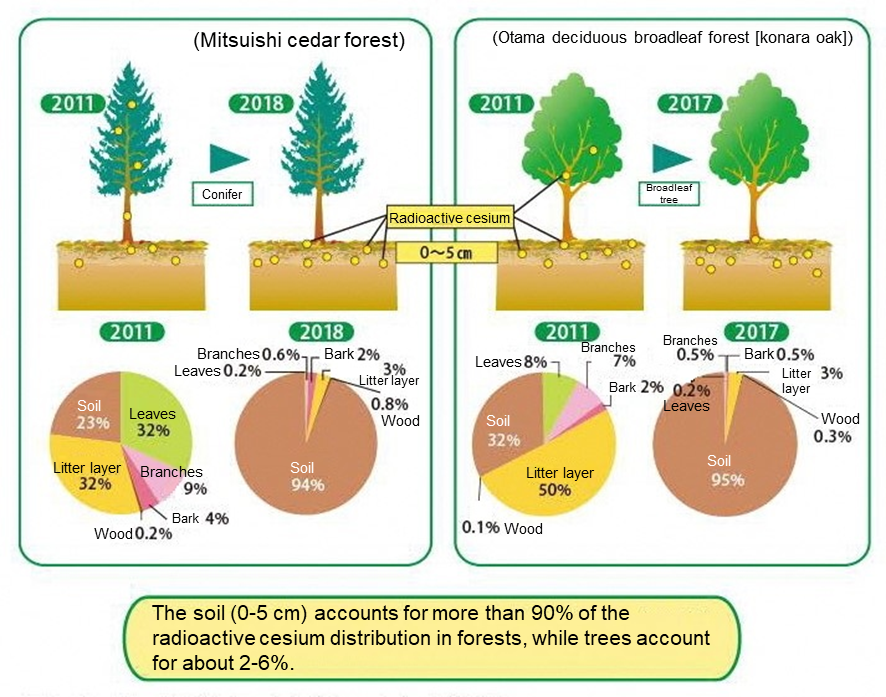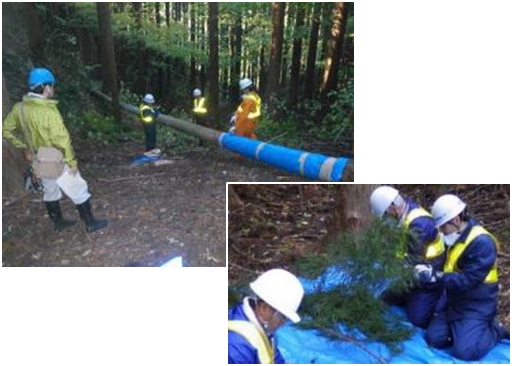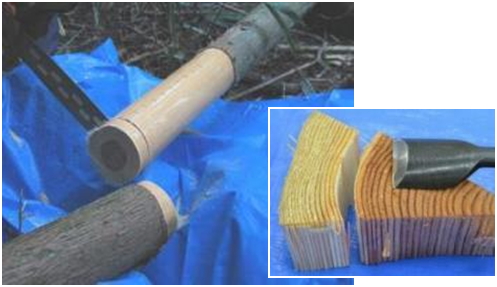Radioactivity Dynamics in forests
(2019)
QWhere is radioactive cesium is deposited in forests? How much? How does the amount change with time?
ASurveys of conifers and broadleaf trees in Fukushima Prefecture show that most of the radioactive cesium is deposited in the litter layer and soil. It was also found that the amount of cesium deposited on trees (above ground) is decreasing over time, while that in the litter layer and the soil layer is increasing.
Fig.1 Survey scenes in a cedar forest in Kawauchi Village and a konara oak forest in Kawamata Town
- Cutting down trees and dividing them into leaves, branches, bark, and wood
- Calculating the weight (biomass weight) of each part

Fig.2 Cesium distribution above ground (trees) and below ground (litter and soil layers) in forests
- We cut down five cedar trees (in Kawauchi Village) and five konara oak trees (in Kawamata Town), divided them into leaves, branches, bark, and wood, and calculated the weight (biomass weight) of each part. Litter and soil were collected as well.
- In both deciduous broadleaf forest (konara oak) and evergreen coniferous forests (cedar), the above-ground trees accounted for about 3-4.5% of the cesium distributed in the forests, while the below-ground litter and soil layers accounted for the rest, or more than 90%.
- Next, we will survey the amount of cesium migration from the soil layer to trees, taking into account the results of tree root surveys.

Fig.3 Dynamic changes in radioactive cesium (134 and 137) in forests
Source: Data from the Forestry Agency, “Report on the FY2018 Project to Survey Radioactive Materials in Forests” (March 2019) and “Report on the FY2017 Project to Survey Radioactive Materials in Forests” (March 2018)
Related articles
- Is radioactive cesium in forests dispersed by wind? 【Near forests】
- Is radioactive cesium in forests dispersed by wind? 【Airy places】
- In what kinds of land use is radioactive cesium deposited? How much is deposited?
- Is it possible to use water from contaminated rivers and reservoirs for irrigation water?
- How much does additional internal dose exposure would be if we assume highest concentration during the fire event was exposed? How harmful for the health?


